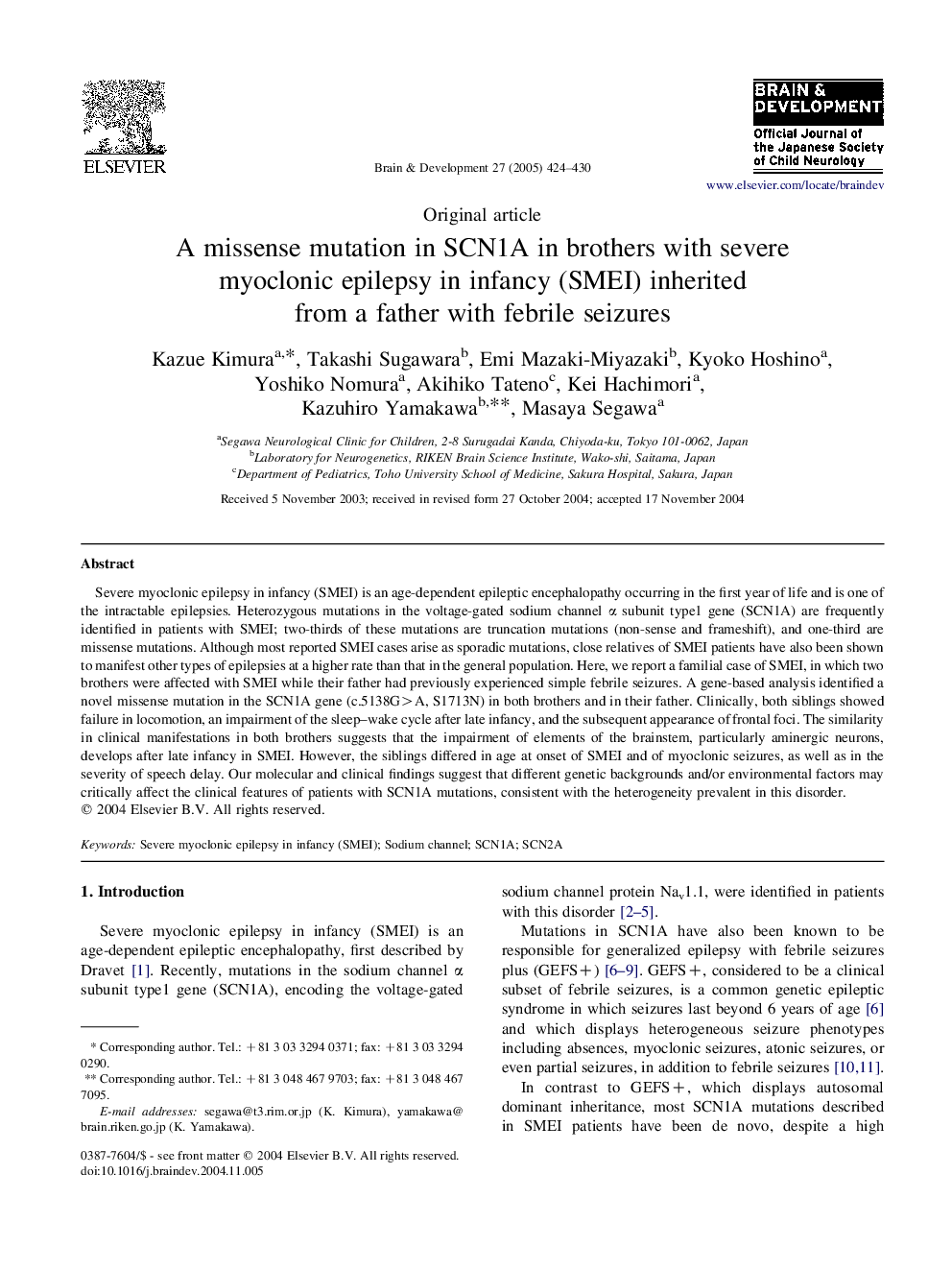| Article ID | Journal | Published Year | Pages | File Type |
|---|---|---|---|---|
| 9187396 | Brain and Development | 2005 | 7 Pages |
Abstract
Severe myoclonic epilepsy in infancy (SMEI) is an age-dependent epileptic encephalopathy occurring in the first year of life and is one of the intractable epilepsies. Heterozygous mutations in the voltage-gated sodium channel α subunit type1 gene (SCN1A) are frequently identified in patients with SMEI; two-thirds of these mutations are truncation mutations (non-sense and frameshift), and one-third are missense mutations. Although most reported SMEI cases arise as sporadic mutations, close relatives of SMEI patients have also been shown to manifest other types of epilepsies at a higher rate than that in the general population. Here, we report a familial case of SMEI, in which two brothers were affected with SMEI while their father had previously experienced simple febrile seizures. A gene-based analysis identified a novel missense mutation in the SCN1A gene (c.5138G>A, S1713N) in both brothers and in their father. Clinically, both siblings showed failure in locomotion, an impairment of the sleep-wake cycle after late infancy, and the subsequent appearance of frontal foci. The similarity in clinical manifestations in both brothers suggests that the impairment of elements of the brainstem, particularly aminergic neurons, develops after late infancy in SMEI. However, the siblings differed in age at onset of SMEI and of myoclonic seizures, as well as in the severity of speech delay. Our molecular and clinical findings suggest that different genetic backgrounds and/or environmental factors may critically affect the clinical features of patients with SCN1A mutations, consistent with the heterogeneity prevalent in this disorder.
Keywords
Related Topics
Life Sciences
Neuroscience
Developmental Neuroscience
Authors
Kazue Kimura, Takashi Sugawara, Emi Mazaki-Miyazaki, Kyoko Hoshino, Yoshiko Nomura, Akihiko Tateno, Kei Hachimori, Kazuhiro Yamakawa, Masaya Segawa,
